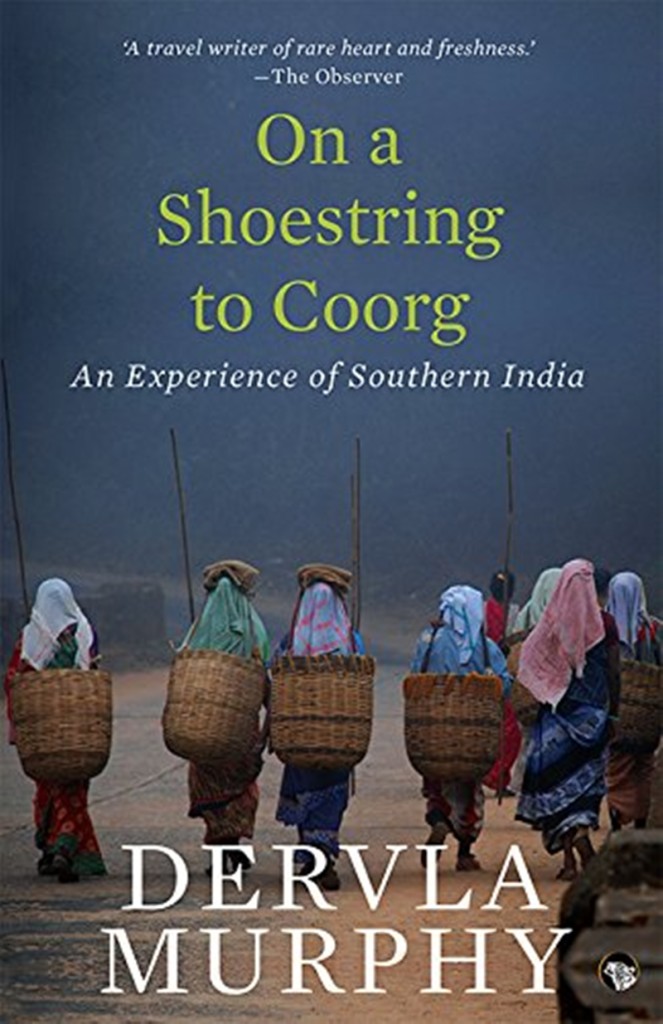Title: On a Shoestring to Coorg
Author: Dervla Murphy / Publisher: Speaking Tiger
Pages: 255 / Price: 450
Best known for her 1965 book Full Tilt: Ireland to India with a Bicycle, adventure writer and eternal tourist Dervla Murphy is a legend of travel documentation and Irish cycling. On a Shoestring to Coorg is a thrilling account of her second visit to India, with her 5-year-old daughter Rachael.
The travel is thrilling because Murphy travels to India with little money, no concrete plans on where exactly to go and by which way, and no one to call her own in the alien land. She makes friends on the way — each one unique in his character and habits, made more so by her descriptions born out of keen observation of their idiosyncrasies and incongruities; travels to the most adverse and remote locales in south India, explores uncharted paths walking, moving on carts and buses and boats and notes down everything with piercing clarity and objectivity.
She loves India, which draws her repeatedly to her, but the love is not imbued with dramatic sentimentalism leading to heaps of unstudied praise. She loves India as she would love her own country — being critical where it needs to be, and also praiseful in places where it deserves. This lends the book a balance not always found in writers who are inundated by an overflowing sympathy for a foreign people or an alien culture. Often writers cross the threshold of restraint in their show of generosity for a different culture and exaggerate even the mundane chores of daily life to something quaint and exhilarating when actually they are not so.
Objectivity is the hallmark of a great writing and Murphy is a master of that, even to the extent of being disparaging at times of certain Indian ways which are obnoxious and irksome to one inured to a different standard of civility in the western world. She is wary of the intrusiveness of Indians in the personal space and their definition of cleanliness at times surprises her. But beyond individual stupidities or cultural drawbacks, Murphy sees the larger picture that is India — her glorious history and heritage, the simplicity and naturalness of life against western showbiz, the varied topography and climatic diversity, the capacity of the people to endure the hardships of life with resilience and equanimity, and the spirit with which they accommodate and accept an outsider as their own. These unique attributes of India are what stand out in this book and make it an informative and valuable document for both Indians and outsiders who want to have a view of India from a different perch and perspective.
Behind all her critical takes on India, lies Dervla Murphy’s deep love for the country and a deeper connect she feels with her that gives her the strength to embrace the difficulties of life here voluntarily, with a kind of persistence and gumption not naturally expected of a foreigner in the 1970s India, when travel and staying facilities, especially in the hinterlands, were largely rudimentary and unsavoury.
But if objectivity is her strength, brevity is not. The book is lengthy when gauged against the limited spatial dimension it covers and the detailing too minute and intricate to sustain patience. Many of the insignificant incidents which could have been dropped for the sake of pith make the book unnecessarily weighty and delay the more important turns and twists in the journey which are of greater interest to the reader.
Dervla Murphy has the eye of a cinematographer which forgets that its medium is not the camera but the printed letter, which needs a different idiom of expression.
source: http://www.freepressjournal.in / The Free Press Journal / Home> Book Review / by Diptiman Chakraborty / September 23rd, 2018


